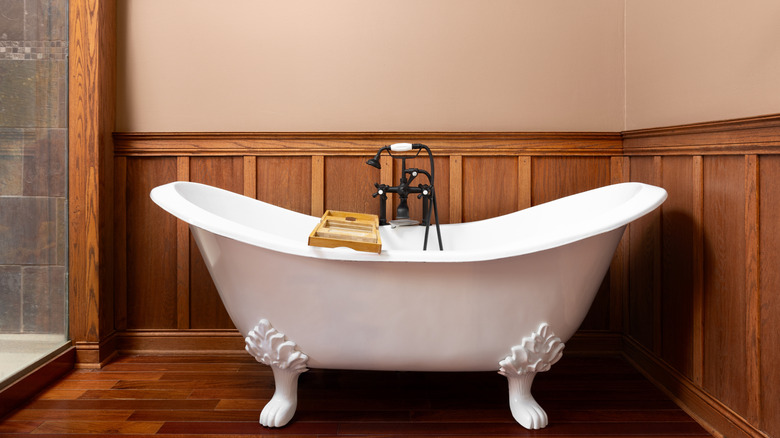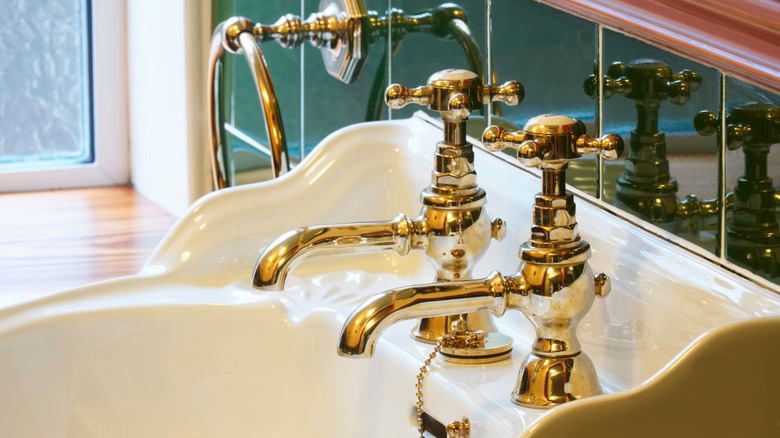Should You Keep The Vintage Plumbing In Your Historic Home?
Living in a vintage home comes with a unique set of challenges. One difficult decision that often comes up is leaving historic elements to preserve the home versus updating fixtures to be more practical. Some decisions are easy — they're the vintage features that everyone loves best. But there are other, more hidden parts of the home that feel as integral for getting the character right. One such piece is the plumbing.
Whether you like the visible parts of the plumbing, are unsure about the condition of the plumbing you cannot see, or just need to weigh the pros against the cost, you may hesitate before replacing plumbing in a historic home. Factors in the decision to keep or replace vintage plumbing include aesthetics, potential safety concerns, the cost of repairs, and the price of replacing the plumbing.
If you notice signs of unsafe plumbing, you should definitely replace your historic pipes and fixtures. In other situations, the decision is often difficult because you like the particular design or the general historical integrity. Vintage fixtures tend to be more ornate than modern ones, and they fit the era of the home. If you value the historic aesthetic, then the details matter. However, you still may have concerns about the safety or durability of the old plumbing. Luckily, you can purchase restored plumbing fixtures or convincing replicas if needed, allowing you to get the vintage look without sacrificing style or authenticity.
Safety concerns related to vintage plumbing
While aesthetics can influence your decision, safety concerns are likely a larger factor. Old plumbing can cause poor water quality, low water pressure, leaks that lead to water damage, decreased energy efficiency, and other significant issues. If you notice discolored water or pipes, leaks, changes in your water bill, sewage smells, slow drains, or any other issues with your plumbing, it should probably be examined. There are many things that can harm the plumbing in your house, and while it may be something that would only be a small issue in a new home, it could be a major problem in a historic one. You do not want to deal with major water damage or other repairs because you did not have your plumbing properly assessed.
Plumbing codes have changed over the years, and the methods and materials used for the plumbing in your historic home may no longer be safe. Even if you have already thought about and tested for lead pipes, there are other materials you may want to have replaced, such as metal pipes that have corroded or polybutylene pipes that could lead to future health complications. Plus, deteriorating pipes can let harmful substances into your water supply. Whether you want to keep your vintage plumbing or not, you should have a plumber check for significant issues at the very least. From there, you can make an informed decision about if you should replace part or all of your old plumbing to take care of your health.
How much does it cost to update plumbing in a historic home?
When considering the cost of keeping or replacing vintage plumbing, the unfortunate news is that both can be quite costly. Keeping the plumbing in place can lead to expensive repairs over time and higher water bills due to reduced efficiency. However, replacing the piping in a house can be an extremely large upfront bill, usually costing at least $1,500 and up to over $15,000, depending on the home. Add in other features, such as water heaters and restored vintage fixtures (or new), and the project is very expensive. On the other hand, if you wait to replace the plumbing, you may have to do it in the future along with repairs for water damage. The costs of paying for lower efficiency plumbing can also add up over time, both for your wallet and the environment. So, despite the higher upfront cost, replacing the plumbing in your old house will likely be cheaper in the long run.
Overall, if you are truly uncertain about what to do, you should call a plumber to come assess the situation. Even if you do not see any signs of damage, having a professional verify the safety of your plumbing can help you feel more comfortable using the plumbing without fear of health risks or rupturing pipes. And, if it is necessary, you can take it as an opportunity to create the perfect vintage bathroom with replica fixtures that are much more efficient and practical.


